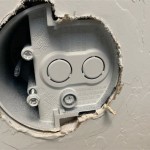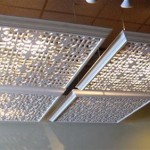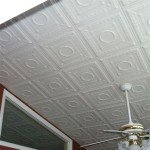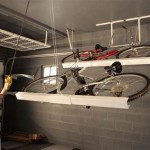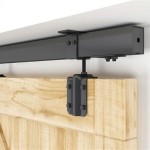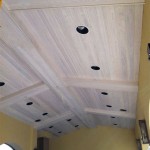How To Fix A Ceiling Fan Pull Chain That Is Stuck
A ceiling fan pull chain that ceases to function correctly, becoming stuck either in the on, off, or some intermediate position, is a common household problem. This issue can stem from various causes, ranging from simple debris accumulation to more complex internal mechanisms failures. Addressing a stuck pull chain promptly is important not only for convenience but also to prevent potential damage to the fan motor or electrical components. This document will outline a systematic approach to diagnosing and resolving this issue, providing detailed instructions and cautionary notes for each step.
Before initiating any repair work, it is paramount to prioritize safety. Electricity poses a significant hazard, and taking appropriate precautions is crucial. The first and most important step is to disconnect the power supply to the ceiling fan. This can be achieved by turning off the corresponding circuit breaker in the electrical panel. Verify that the power is indeed off by attempting to operate the fan switch or observing the fan's light fixture. If the fan continues to function, it indicates that the correct circuit breaker has not been identified. Continue to methodically switch off breakers until the fan is completely de-energized. Following this, use a non-contact voltage tester to further confirm the absence of electricity at the fan's wiring connections. This step provides an additional layer of safety, ensuring that no accidental electrical shock occurs during the repair process. Once the power is safely disconnected, gather the necessary tools for the task. These typically include a stepladder to reach the fan, a screwdriver set (both Phillips head and flathead), pliers or a small wrench, a can of electrical contact cleaner or lubricant (such as WD-40 or similar), and potentially a replacement pull chain switch, depending on the nature of the problem.
Identifying the Cause of the Stuck Pull Chain
The first step in resolving a stuck pull chain is to accurately diagnose the underlying cause. Several factors can contribute to this malfunction, and a systematic approach to troubleshooting will help pinpoint the issue. Start by visually inspecting the pull chain itself. Check for any signs of physical damage, such as kinks, bends, or breaks in the chain links. A damaged chain can become lodged within the switch mechanism, preventing free movement. Furthermore, examine the area where the chain enters the switch housing. Look for any accumulation of dust, dirt, or debris that may be obstructing the chain's path. Over time, these particles can accumulate and solidify, acting as a physical barrier. If the chain appears to be intact and free of obvious obstructions, proceed to the next step, which involves attempting to gently manipulate the chain.
Apply a slight amount of force to pull the chain in both directions, observing whether there is any resistance or grinding sounds. If the chain moves with difficulty, it may indicate that the internal components of the switch mechanism are corroded or worn. Corrosion can occur due to exposure to humidity or moisture, causing the internal parts to seize up. In this situation, lubrication may be a viable solution. However, if the chain is completely locked in place, or if there is a distinct clicking sound but the fan does not respond, it is more likely that the switch mechanism itself is faulty. A faulty switch may have a broken internal spring, a damaged contact point, or a more complex mechanical failure. In such cases, replacing the switch will usually be necessary. Another possible cause, albeit less common, is that the pull chain has become detached from the internal switch lever. This can occur if the connecting link has broken or come loose. In this scenario, the chain will move freely without engaging the switch mechanism.
To further isolate the problem, it is beneficial to understand the basic operation of a ceiling fan pull chain switch. Typically, these switches are rotary switches with multiple positions corresponding to different fan speeds (high, medium, low, and off). Each pull of the chain advances the switch to the next position in the sequence. If the switch is not rotating smoothly or is skipping positions, it could indicate an internal problem. If the fan has a light kit, the light kit pull chain switch may also be malfunctioning. This would be independent of the fan speed pull chain. Sometimes the problem may appear to be the fan speed, but be the light pull chain. Carefully inspect the pull chain mechanism of the light if applicable.
Lubricating and Cleaning the Pull Chain Mechanism
If the initial assessment suggests that the stuck pull chain is due to dirt, debris, or corrosion, lubricating and cleaning the mechanism can often restore its functionality. Before applying any lubricant, it is essential to thoroughly clean the area around the chain and the switch housing. Use a small brush, such as a toothbrush or a detail brush, to remove any loose dust, dirt, or cobwebs. Pay particular attention to the opening where the chain enters the switch. A can of compressed air can also be used to blow away any remaining particles. Once the area is clean, apply a small amount of electrical contact cleaner or lubricant directly to the pull chain and the switch mechanism. These products are specifically designed to displace moisture, dissolve corrosion, and provide lubrication to moving parts. Avoid using excessive amounts of lubricant, as this can attract more dust and debris over time, potentially exacerbating the problem.
After applying the lubricant, gently pull the chain back and forth several times, allowing the lubricant to penetrate the internal components of the switch. This process helps to loosen any accumulated deposits and restore smooth operation. Continue to work the chain until it moves freely through its full range of motion. If the chain still feels stiff or resistant after several attempts, consider applying a second application of lubricant. However, if the chain remains stuck despite repeated lubrication and cleaning, it is likely that the internal components of the switch are damaged beyond repair, and replacement will be necessary. It is important to note that some lubricants can damage certain types of plastic or rubber components. Before using any lubricant, carefully review the product's label and instructions to ensure that it is compatible with the materials used in the ceiling fan switch. If there is any doubt, it is always best to use a lubricant specifically designed for electrical contacts, as these are typically safe for use on most materials. Furthermore, always exercise caution when working with lubricants, as they can be flammable. Avoid exposing them to open flames or high temperatures.
When working with electrical contact cleaner, ensure adequate ventilation. These cleaners can release fumes that may be harmful if inhaled. If possible, work in a well-ventilated area or wear a respirator mask to protect yourself from the fumes. After the lubrication process, wipe away any excess lubricant using a clean cloth. This will prevent the accumulation of dust and debris on the switch housing. Regularly cleaning and lubricating the pull chain mechanism can help to prevent future problems and extend the lifespan of the ceiling fan switch.
Replacing the Pull Chain Switch
If lubricating and cleaning the pull chain mechanism fails to resolve the issue, the most likely cause is a faulty switch that requires replacement. Replacing a ceiling fan pull chain switch is a relatively straightforward task, but it requires careful attention to detail and adherence to safety precautions. Before starting the replacement process, ensure that the power supply to the ceiling fan is disconnected as described previously. This step is crucial to prevent electrical shock.
Next, carefully remove the ceiling fan's light fixture (if applicable) and the switch housing to gain access to the wiring connections. The switch housing is typically held in place by screws or clips. Once the housing is removed, locate the wires connected to the faulty pull chain switch. These wires are usually connected using wire connectors or wire nuts. Using a screwdriver, carefully disconnect the wires from the switch. It is important to note the position of each wire before disconnecting them, as this will be necessary to properly reconnect the wires to the new switch. A simple way to record the wire positions is to take a photograph or draw a diagram of the wiring configuration. After disconnecting the wires, remove the old pull chain switch from the fan. The switch is typically held in place by a nut or a clip. Once the old switch is removed, install the new pull chain switch in its place. Secure the switch with the nut or clip. Next, reconnect the wires to the new switch, matching the wiring configuration that was previously recorded. Ensure that the wire connectors or wire nuts are securely tightened to prevent loose connections, which can cause electrical problems. After the wires are reconnected, carefully tuck them back into the switch housing and reassemble the housing and the light fixture (if applicable). Finally, restore power to the ceiling fan by turning on the circuit breaker. Test the new pull chain switch to ensure that it is functioning properly. If the fan operates correctly, the replacement process is complete.
When selecting a replacement pull chain switch, it is important to choose a switch that is compatible with the ceiling fan's electrical specifications. Check the fan's manual or the old switch for information on the voltage and amperage ratings. Using a switch with incorrect ratings can damage the fan or create a fire hazard. It is also best practice to purchase a replacement switch from a reputable supplier to ensure that it meets quality and safety standards. In some cases, it may be necessary to replace the entire ceiling fan if the switch is integrated into the fan's motor housing or if other components of the fan are also damaged. This determination would depend on the cost of repair and the cost of a replacement fan. If the repair becomes too complex or if you are not comfortable working with electrical wiring, it is always best to consult a qualified electrician. A licensed electrician has the knowledge and experience to safely and efficiently repair or replace the ceiling fan.

Ceiling Fan Chain Stuck Fix Easy Fast Steps

Ceiling Fan Pull Chain Stuck We Have A Fix Upgradedhome Com

How To Fix Pull Chain For Ceiling Fan Light

How To Fix Replace A Ceiling Fan Pull Chain Switch

Is Your Ceiling Fan Chain Stuck We Have An Easy Fix Upgradedhome Com

Fix A Snapped Fan Pull Chain At No Cost How To

Ceiling Fan Pull Switch Repair How To With Single Light Fixture

Ceiling Fan Chain Stuck Fix Easy Fast Steps

Ceiling Fan Chain Stuck Fix Easy Fast Steps

How To Fix A Stuck Pull Chain On Light Fixture Circuits Gallery
Related Posts

